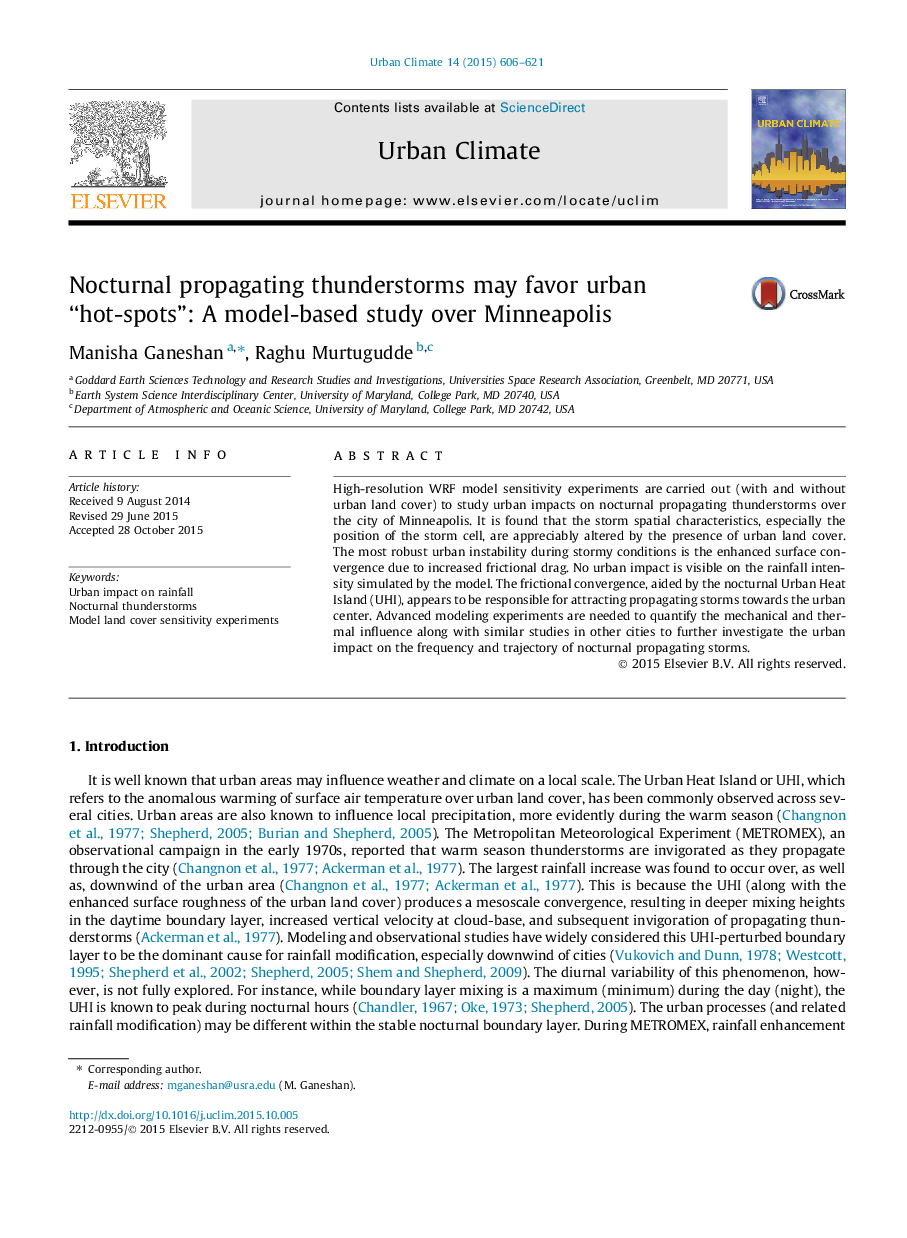| Article ID | Journal | Published Year | Pages | File Type |
|---|---|---|---|---|
| 10260268 | Urban Climate | 2015 | 16 Pages |
Abstract
High-resolution WRF model sensitivity experiments are carried out (with and without urban land cover) to study urban impacts on nocturnal propagating thunderstorms over the city of Minneapolis. It is found that the storm spatial characteristics, especially the position of the storm cell, are appreciably altered by the presence of urban land cover. The most robust urban instability during stormy conditions is the enhanced surface convergence due to increased frictional drag. No urban impact is visible on the rainfall intensity simulated by the model. The frictional convergence, aided by the nocturnal Urban Heat Island (UHI), appears to be responsible for attracting propagating storms towards the urban center. Advanced modeling experiments are needed to quantify the mechanical and thermal influence along with similar studies in other cities to further investigate the urban impact on the frequency and trajectory of nocturnal propagating storms.
Related Topics
Physical Sciences and Engineering
Earth and Planetary Sciences
Earth and Planetary Sciences (General)
Authors
Manisha Ganeshan, Raghu Murtugudde,
